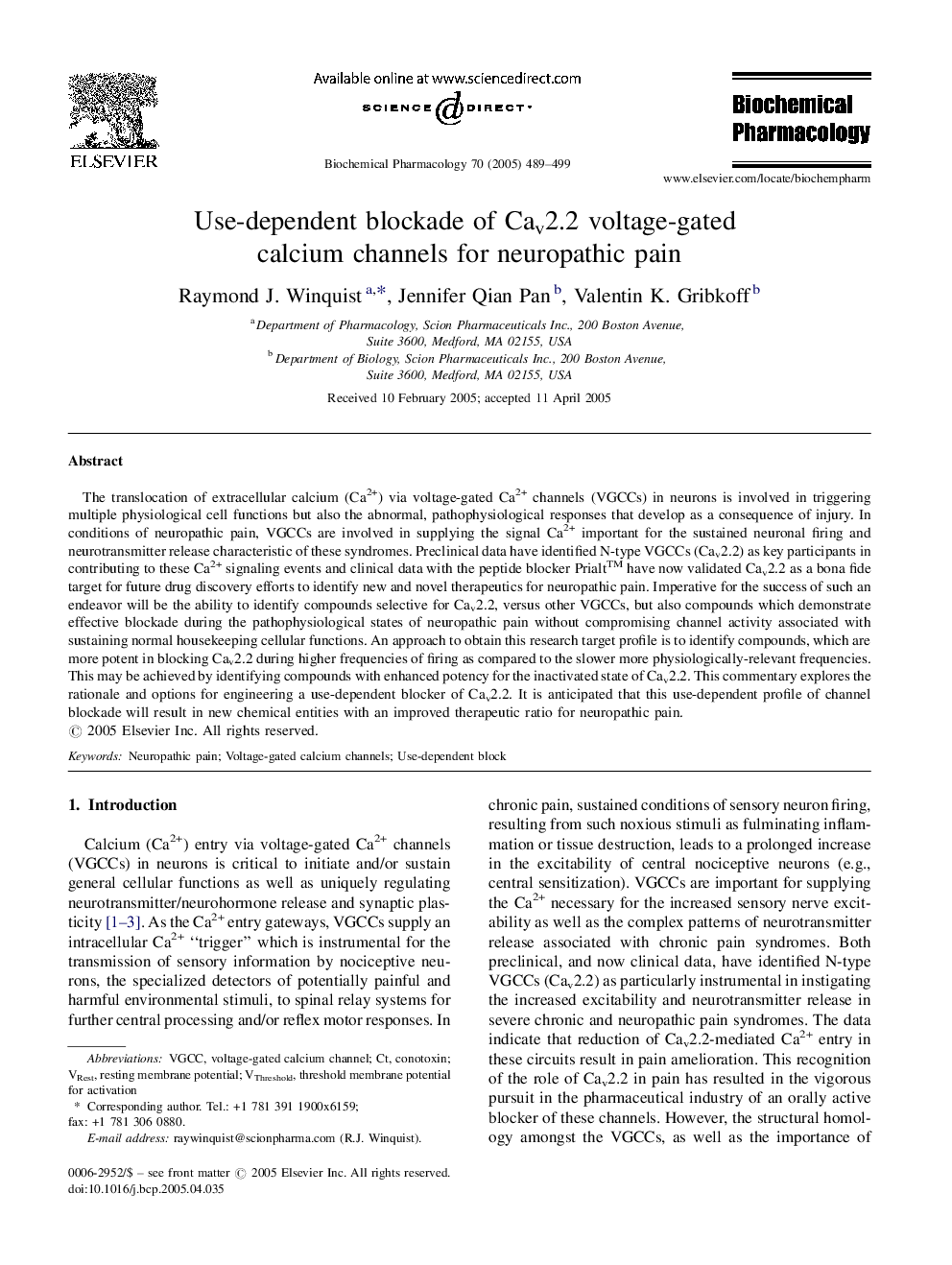| Article ID | Journal | Published Year | Pages | File Type |
|---|---|---|---|---|
| 9001803 | Biochemical Pharmacology | 2005 | 11 Pages |
Abstract
The translocation of extracellular calcium (Ca2+) via voltage-gated Ca2+ channels (VGCCs) in neurons is involved in triggering multiple physiological cell functions but also the abnormal, pathophysiological responses that develop as a consequence of injury. In conditions of neuropathic pain, VGCCs are involved in supplying the signal Ca2+ important for the sustained neuronal firing and neurotransmitter release characteristic of these syndromes. Preclinical data have identified N-type VGCCs (Cav2.2) as key participants in contributing to these Ca2+ signaling events and clinical data with the peptide blocker Prialt⢠have now validated Cav2.2 as a bona fide target for future drug discovery efforts to identify new and novel therapeutics for neuropathic pain. Imperative for the success of such an endeavor will be the ability to identify compounds selective for Cav2.2, versus other VGCCs, but also compounds which demonstrate effective blockade during the pathophysiological states of neuropathic pain without compromising channel activity associated with sustaining normal housekeeping cellular functions. An approach to obtain this research target profile is to identify compounds, which are more potent in blocking Cav2.2 during higher frequencies of firing as compared to the slower more physiologically-relevant frequencies. This may be achieved by identifying compounds with enhanced potency for the inactivated state of Cav2.2. This commentary explores the rationale and options for engineering a use-dependent blocker of Cav2.2. It is anticipated that this use-dependent profile of channel blockade will result in new chemical entities with an improved therapeutic ratio for neuropathic pain.
Keywords
Related Topics
Health Sciences
Pharmacology, Toxicology and Pharmaceutical Science
Pharmacology
Authors
Raymond J. Winquist, Jennifer Qian Pan, Valentin K. Gribkoff,
